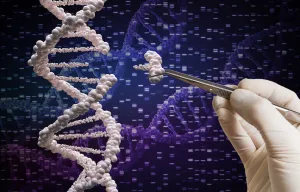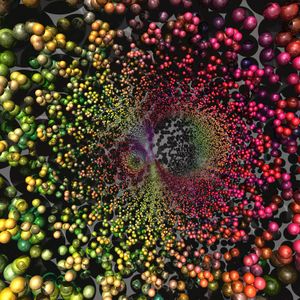Epigenetic Reactivation Without Editing: A Quick-Start for Allied Health & Integrative Practitioners
Introduction: Rethinking Refractory Disease
Many refractory diseases—certain cancers, autoimmune conditions, and neurodegenerative disorders—persist despite optimal therapy. Increasingly, the literature suggests that the culprit isn’t irreparable DNA damage, but epigenetic repression: genes silenced via chromatin locks, maladaptive signaling loops, or metabolic bias away from repair. Marc Malone’s Triune Restoration Framework proposes a structured approach to restore transcriptional access and enable repair without DNA editing. For clinicians, this offers a conceptual roadmap: modulate signaling, unlock chromatin, and support metabolism to tip cells from dysfunction back to repair competency.
Mechanistic Pillars
1. Signal: PI3K → AKT → mTOR Decoupling
- Rationale: PI3K/mTOR interfaces with DNA damage response and cell survival. Fine-tuning these pathways can shift cells toward repair rather than uncontrolled proliferation.
- Nuance: Over-inhibition may impair repair or provoke compensatory circuits—precision and timing matter.
- Literature Anchors:
2. Chromatin: Relieve SIN3/HDAC Repression
- Rationale: SIN3-HDAC complexes regulate transcriptional repression and activation. Reducing their suppressive activity increases chromatin accessibility, enabling transcriptional competence.
- Literature Anchors:
3. Metabolism: α-Ketoglutarate (AKG) as Epigenetic Co-Factor
- Rationale: AKG fuels TET DNA demethylases and JmjC histone demethylases, supporting demethylation and gene re-expression while promoting mitochondrial and metabolic efficiency.
- Literature Anchors:
Candidate Profiles & Red Flags
Potential Candidates:
- Refractory oncology phenotypes with evidence of receptor loss/silencing (e.g., ESR1/PGR)
- Neurodegenerative or autoimmune conditions with epigenetic signatures
- Patients intolerant to standard cytotoxic regimens
Caution:
- PI3K/mTOR modulation can impact glycemic control, immune tone, wound healing, and therapy resistance pathways
- Close monitoring is mandatory
References:
Practical Workflow (High-Level)
- Baseline Workup:
- Receptor status, targeted RNA panels
- Inflammation markers, metabolic panel
- Imaging as indicated
- Intervention Modules:
- Signal Modulation: Selective PI3K targeting to preserve mTOR-S6 repair; avoid blunt dual blockade
- Chromatin Access: Reduce SIN3/HDAC repression to increase transcriptional competence
- Metabolic Support: AKG supplementation to enhance demethylase activity and mitochondrial function
- Monitoring:
- Periodic receptor re-testing (IHC) and transcript changes (qPCR/RNA-seq)
- Imaging and patient-reported quality-of-life metrics
- Adverse event surveillance: metabolic shifts, hepatic/renal function, immune effects
Patient-Facing Language for Consent & Clarity
“We’re not editing DNA. We’re trying to re-open access to genes your body already owns, then support repair biochemically. We’ll monitor you closely and stop if labs or symptoms suggest risk.”
Clear, honest communication helps patients understand that this is epigenetic reactivation, not gene therapy.
Evidence Snapshot
- Case-level human data: Multi-locus gene re-expression (ESR1/PGR) with clinical response
- Mechanistic rationale: Consistent with known roles of PI3K/mTOR signaling, SIN3/HDAC repression, and AKG-dependent demethylation
- Next steps: Controlled clinical trials are required to validate efficacy and safety
References:
Conclusion: Guiding Cells Back to Repair
Triune Restoration reframes refractory disease not as a permanent genetic failure, but as a dynamic state of gene silence. By strategically modulating signaling, chromatin, and metabolism, clinicians can restore transcriptional access and support cellular repair—without editing DNA. While early evidence is promising, clinical prudence is paramount: patient selection, mechanistic understanding, and vigilant monitoring remain the pillars of safe, innovative practice. This framework empowers practitioners to shift cells from dysfunction toward repair, offering hope for patients where conventional approaches have plateaued.



